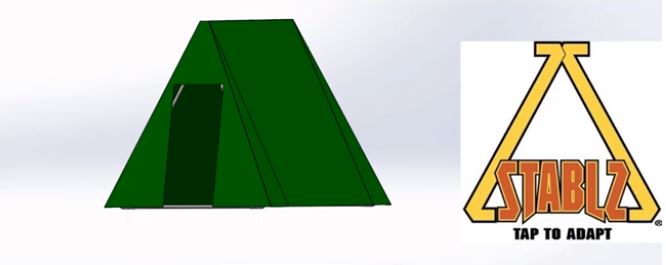The roots of STABLZ are firmly planted in central Ohio. That’s where my alma mater, Otterbein University, is located, and that’s where I went when I was looking to develop prototypes featuring my Tap To Adapt™ Technology.
So when Ohio was struck by 21 tornadoes on May 27 and 28, my heart went out to those who lost their homes. A preliminary damage assessment the first week of June by federal and state agencies identified 942 homes and buildings either destroyed or significantly damaged. And that was just in Ohio. A record number of tornadoes were confirmed across the country during the long series of severe weather in May.
FEMA prepares in advance for severe weather seasons, and as they plan for next year, I hope they consider new technology available for temporary shelter. STABLZ Tap to Adapt Technology makes it possible for temporary shelter to quickly erect on any terrain with stability.
STABLZ Tap To Adapt™ Technology features a patented, game changing vertical support, triangular in shape, that will adapt easily to uneven surfaces. A simple tap of the foot pivots the triangle resulting in four points of contact on any terrain. No bending over or tools required — it’s that simple!
View a video prototype of a temporary shelter here.
In an emergency, the last thing anyone wants to do is look for flat terrain nearby. STABLZ will take that logistical concern away and let neighbors and first responders focus on the most important thing — the people.
When there’s not an emergency, temporary structures with STABLZ technology are ideal shelters for off-grid hunting and fishing, ice fishing, camping, and backcountry hiking — or even just a night in the backyard with kids!
Several designs are prototyped, tested, and ready for market. Tap To Adapt™ Technology is scalable from a couple of inches to stories high. To learn more about STABLZ products and licensing opportunities, visit taptoadapt.com or contact me at gary@taptoadapt.com or (770) 315-1482.
